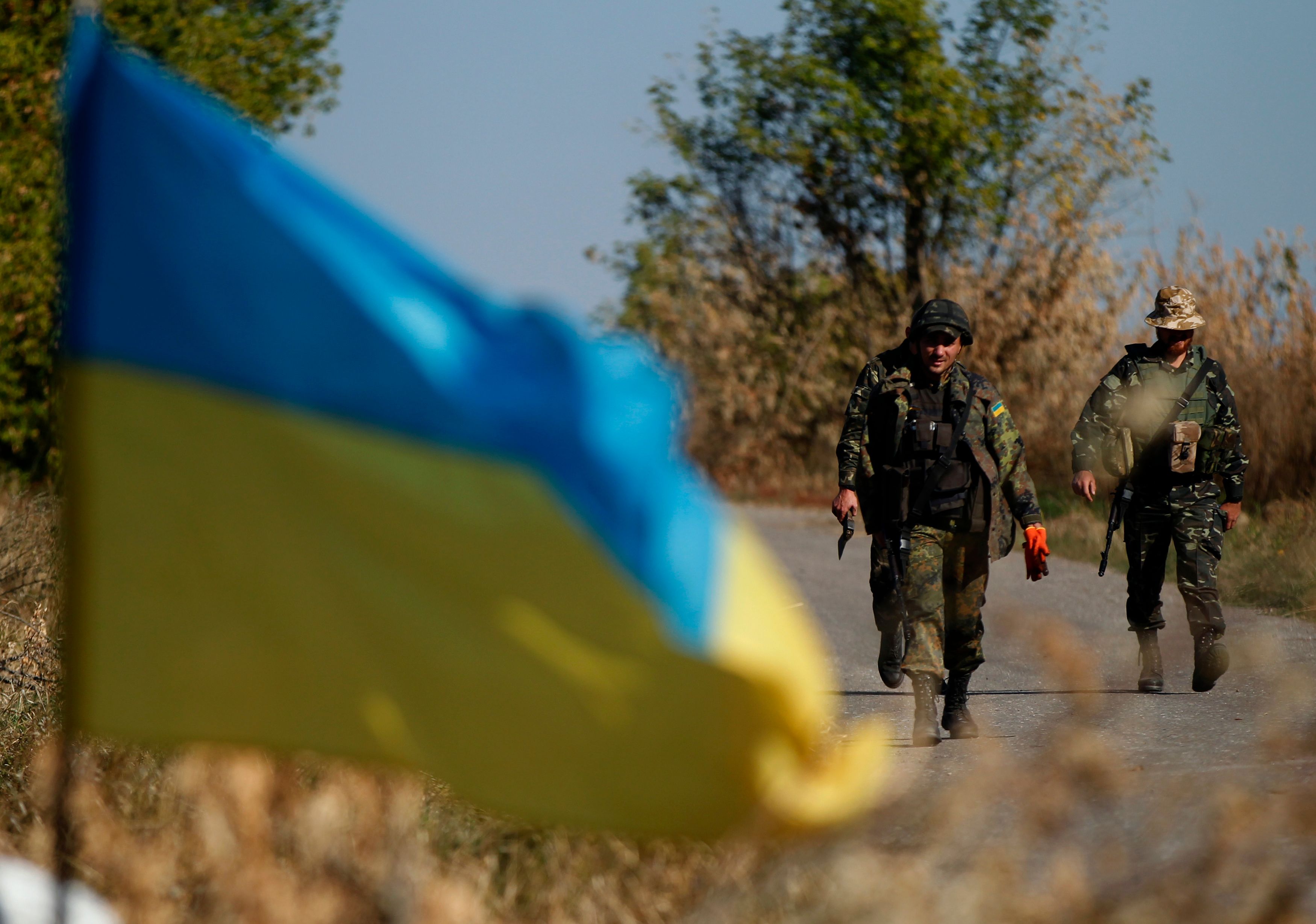Ukraine’s New Military Security Strategy

The Strategy’s Assumptions
Approved by President Volodymyr Zelensky on 25 March 2021, Ukraine’s new Military Security Strategy replaces the 2015 Military Doctrine formulated during the fierce first phase of the conflict with Russia. The previous document stipulated that Ukraine should aim to achieve the ability to defend itself against Russian aggression on its own and to achieve full interoperability with NATO forces by 2020. Both goals were overly ambitious and not met.
The Military Security Strategy assumes that the aggressive policy of the Russian Federation, which has been identified as a military adversary, continues to be the greatest threat to Ukraine’s security. The document assesses aggression by another state or dragging Ukraine into an external conflict as less likely. Ukraine’s main objective is to deter Russia from further escalation of the war by increasing the cost of a potential offensive and occupation to an unacceptable level. Deterrence is to be achieved through diplomatic means and the implementation of a comprehensive security concept that considers both military and non-military activities, such as propaganda and cyber warfare. It is intended to maximise the use of Ukraine’s potential without over-militarising the country.
The Military Aspect
The strategy indicates the need to adapt the armed forces to operate on the modern battlefield, given the experience of the war with Russia. Great emphasis is put on the development of tactical missile and anti-aircraft forces as well as use of drones, satellite communications and navigation to increase the cost of conducting military operations by an aggressor on Ukrainian territory. It is planned to implement the concept of network-centric warfare, which envisages the creation of an information exchange network using modern communication and reconnaissance systems and decentralisation of command. This is intended to enable Ukraine to conduct asymmetric operations against a stronger opponent.
The strategy gives priority to the modernisation and use of the land forces, which are to cooperate with Ukrainian society in ensuring the defence of the country. At present, a contract army forms the basis of the armed forces. It is supplemented by conscription and voluntary service in the reserve and territorial defence forces. The strategy envisages the development of territorial defence potential and the replacement of conscription with compulsory training in the reserves, which would prepare society for the creation of a resistance movement in case of occupation.
The strategy outlines a defence scenario divided into four stages. In the first, regular armed forces and territorial defence forces are to be used. They will aim to deter offensives using asymmetric actions, including in enemy territory. The second stage includes support from reserve forces and the formation of resistance in occupied areas. This is to gain the time needed to implement the third stage, which is to carry out general mobilisation and obtain foreign military support. The fourth stage is to be post-conflict stabilisation using the armed forces.
The strategy deals superficially with the issues of the modernisation of the navy. Although, unlike the Military Doctrine, it highlights the potential threat to shipping in the Black and Azov seas posed by Russia’s aggressive policy, it limits itself to increasing reconnaissance and missile strike capabilities. The strategy does not mention the reinforcement of the fleet with small coastal defence vessels, which is currently being undertaken. The modernisation of the air force likewise has been treated superficially. The strategy only mentions the need to acquire multirole combat aircraft in the long term.
The Non-Military Aspect
To stop Russia’s aggressive actions, the strategy envisages the use of international political and economic sanctions. Ukraine is to strive for their extension and the imposition of new ones in case of further hostile actions on the part of Russia (e.g., violation of the ceasefire in Donbas). The strategy, in contrast to the Military Doctrine, does not directly point to the possibility of regaining control over the occupied territories as a result of a military operation. This is to be achieved through diplomatic efforts. One example of these is the Ukrainian efforts to set up the Crimean Platform in which states that oppose the occupation of the peninsula (Poland, Turkey, the U.S. and the UK have declared their support) would participate.
According to the strategy, Ukraine’s defence policy is designed to lead to NATO membership. Further implementation of NATO standards, increasing the interoperability of the Ukrainian Armed Forces with the forces of the Alliance, and fulfilling the criteria for NATO membership are envisaged. Increasing Ukraine’s involvement in international NATO missions is also intended to bring the prospect of accession closer. This is meant to build Ukraine’s position as a potentially valuable ally, not only a “recipient” of international security but also a “provider”. Currently, the Ukrainian Armed Forces are taking part in NATO operations in Kosovo and Afghanistan. In April this year, Ukraine announced its intention to become involved in missions in the Mediterranean Sea and Iraq.
Given its limited financial and technological capabilities, Ukraine will seek international technical and financial support for the modernisation of the army and cooperation with foreign investors in the joint production of armaments. Actions in this direction are already being taken: for example, the Ukrainian-Turkish joint-venture Black Sea Shield is working on guided anti-tank missiles, drones, and radio-electronic warfare systems. Ukraine has signed a letter of intent with the United Kingdom on the construction of missile boats as well.
Conclusions
The defence strategy is less ambitious than the doctrine that preceded it, but it is characterised by greater realism in the selection of measures aimed at strengthening Ukraine’s deterrent potential. The focus on the development of the ground forces, especially the mobilisation capabilities of the reserve and territorial defence forces, stems from the experience of the war with Russia, when poor training and equipment, as well as problems in conscription, made it impossible to effectively resist the well-trained Russian infantry. The measures envisaged by the strategy should reduce the likelihood of a repeat of the scenario of the annexation of Crimea and the occupation of Donbas. However, they will not prevent periodic escalations of conflict along the demarcation line, which are provocations by Russia to exert political pressure on Ukraine, NATO, and the EU.
Investment in the air force and navy has received cursory attention, which may result in a decline in their combat potential in the medium term. Modernisation of these types of armed forces is the most expensive, and Ukraine’s economic potential does not allow it to strengthen them to a level that would prevent Russia from dominating Ukraine’s airspace and sea. However, the development of missile and air defence forces and the acquisition of coastal defence vessels would allow Ukraine to partially replace these capabilities, using its defence industry.
Further support for Ukraine from NATO countries—financial and in the form of military equipment and exercises—will be necessary to fully implement the strategy. Poland may intensify military cooperation with Ukraine by conducting joint exercises of Ukrainian and Polish territorial defence forces and developing joint armaments, in particular artillery, radar and communications systems, and drones. Poland may also seek to increase the effectiveness of cooperation within the Lithuanian-Polish-Ukrainian brigade (LITPOLUKRBRIG).


